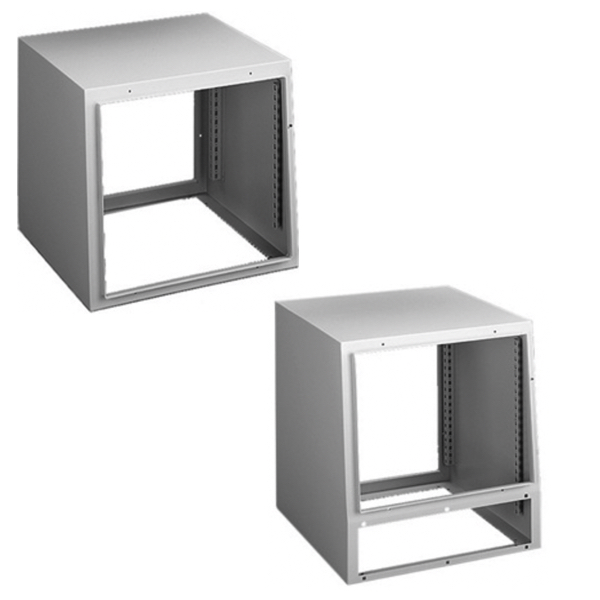nVent Hoffman Slope Front HMI Enclosures

HMI enclosures are designed specifically for the wide range of Human Machine Interface applications found in industrial settings. It is important to have customization options like removable front plates that allow for easy installation of HMI components, optional door panels that can be mounted anywhere and cutout options where needed. Some enclosures are designed to enclose, protect and suspend lightweight HMI devices. HMI enclosures should always be rated to protect sensitive systems from the sometimes harsh environments found in industrial settings. This would include protection against moisture, chemicals and dirt, as well as, temperature variations.
nVent Hoffman PROLINE slope-front HMI enclosures have a 5 degree slope and are ideal for monitors and keyboards. The modular design is adaptable for nearly any application. There are two styles of sloped-front enclosures: one with a full-front opening and the other with an accessory opening. The full-front opening enclosure is available in 400, 500 and 700 mm heights and has door and cover options. The open bottom is suitable for joining the top to a 700 mm PROLINE frame. The bottom of some sizes can be joined through a cutout base to a pedestal or pendant arm system. The Hoffman PROLINE slope-front HMI enclosure with an accessory opening is available in 500 and 700 mm heights and has door and cover options. The lower accessory opening is suitable for keyboards. The open bottom is suitable for joining the top to a 700 mm PROLINE frame. The bottom of some sizes can be joined through a cutout base to a pedestal or pendant arm system.
HMI vs OIT, What's the Difference?
Human Machine Interface (HMI) is a software interface that allows operators to interact with various pieces of electrical hardware and controls systems. HMI typically utilizes monitors or screens to display information, which are referred to as HMI screens. The screens are not the actual HMI, but are a tool used to display HMI software. For example, electrical enclosures often have screens mounted on the outside of them to provide users with information about ongoing process and to allow users to make changes to the system.
Operator Interface Terminal (OIT) typically displays basic information about the electrical hardware that it is attached to. It provides only local information about the environment it is interfacing with and allows control and monitoring for that one piece of hardware, not an entire system.

